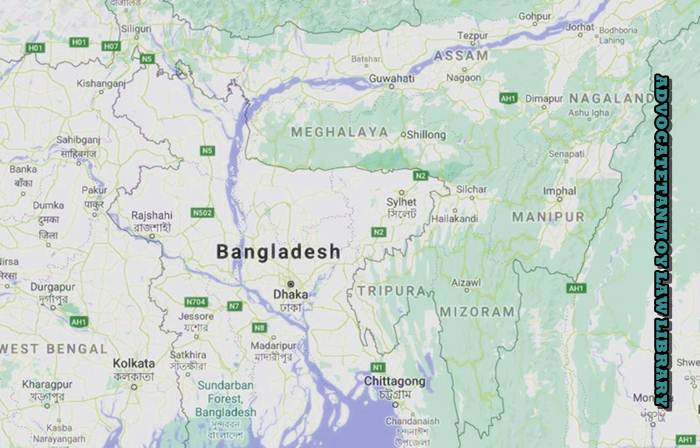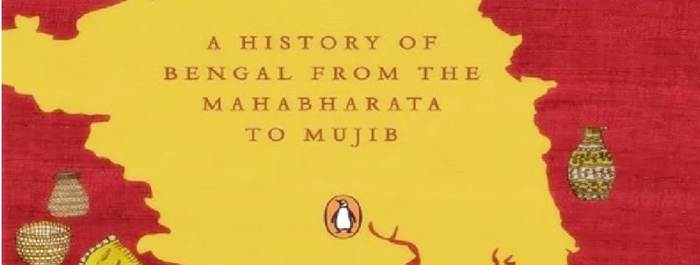
Book excerpt
PENGUIN BOOKS 2011
Preface
“This is by far the only book that covers the history of BengalWest Bengal Bengal derived its name from Vedik king Vanga (Son of Vali). Banga was part of the Magadha Kingdom of Jarasandha and later Nanda dynasty. After the Garuda Dynasty ( history lost) the region was named Gouda Bhumi. from the earliest times until the emergence of Bangladesh in 1971 as an independent country. Bengal, or ‘Bangla Desh’, as it is called by all Bengalis in the cultural sense (as distinct from the post-1971 country of Bangladesh in the political sense), has gone through many changes across centuries. There was the first partition of Bengal in 1905 by LordLord Adoni in Hebrew (אָדוֹן) and dominions in Larin. άρχοντας / κύριος in NT Curzon which was resisted by the majority of the people. There was also the second partition in 1947 when a majority of the people called for a partition of the province into a HinduHindu A geographical name given by non-Hindus, who came to visit Bharatvarsha (Hindusthan). Sanatan Dharma is the actual Dharmic tradition of the Hindus. People who live in Hindusthan are Hindu, whether they Follow Islam, Chris, Buddha, Mahavira, or Nanaka. In this way, Tribals are also Hindu.-majority segment and the MuslimMuslim A community gathered around Muhammad (d. 632 CE) and confessed that Muhammad was the last of Prophets and he received Quran through Zibreel Farista from Allah. Hadith of Sahih Bukhari faithfully recorded the commands of Muhammad. He acknowledged the contribution of Jesus to the Abrahamic Religion.-majority segment, the former going to IndiaIndia Bharat Varsha (Jambu Dvipa) is the name of this land mass. The people of this land are Sanatan Dharmin and they always defeated invaders. Indra (10000 yrs) was the oldest deified King of this land. Manu's jurisprudence enlitened this land. Vedas have been the civilizational literature of this land. Guiding principles of this land are : सत्यं वद । धर्मं चर । स्वाध्यायान्मा प्रमदः । Read more and the latter going to Pakistan. From that point the two Bengals ceased to share a common political history and the Bengali-speaking people were split between the province of EastBengal (known as East Pakistan from 1956 till 1971) and the Indian state of Wiest Bengal. In 1971 East Pakistan revolted against West Pakistan and seceded to create a new nationNation A collective consciousness, founded in ancient origin within a geographic area, with definite history and heritage, culture and way of life, language and literature, food and clothing, coupled with a deep understanding of war and peace is to be known as a nation. Rasra is the Vedic word for it.-state known as Bangladesh.During the last four decades, I have been known as an author on management, economics and related subjects. It will surprise many friends to knowKnowledge η γνώση (Greek), scientia (scientia), ज्ञानम् (Sanskrit), 知识 Zhīshì (China) > Wnen an informed person digest the data receiver through sense his organs or intuition, digest it through electro-neuro function and make it part of his psyche, then it is called Knowledge. Vedic Nasadiya Sukta questioned the possibility of ultimate truth or knowledge. that I majored in history and started my career by teaching history in PresidencyCollege, Calcutta, in 1956–57 before I joined the Indian Administrative Services(IAS). I was then gradually sucked into the world of management science and applied economics and took a PhD in management from the University of Delhi”.
“The present work was completed during the last seventeen years after I retired from government, in the midst of political and academic preoccupations. This is my ‘private sector’ effort outside my ‘public sector’ activities in management and in politics. I shall consider my labour amply rewarded if those who speak Bengali, about 250 their common political history, their shared composite culture and, above all, the common language they take pride in. The study starts with the geographical background of Bengal’s history, the origin of the Bengalee race and the growth of the Bengali language. The unity of language was a major factor in the emergence of Bengal as a distinct political and cultural entity. The history of Bengal is sketched right from the days of the Mahabharata, through the Maurya, Gupta, Pala, and Sen dynasties, the Turkish conquest and the Turkish phase of medieval Bengal, the Mughal period and the British conquest of this province in the eighteenth century. Thereafter, it sketches the Bengal Renaissance, the growth of nationalism, the growth of Muslim separatist politics, the attempts at forging a united Bengali nation and eventually the failure of these efforts leading to Partition. It especially analyses the factors that created misunderstanding among the Muslim Bengalees and the Hindu Bengalees despite a lot of goodwill and commonality between the two which made Bengal’s second partition in 1947 unavoidable.Following Partition, the study traces the history of East Bengal through various phases, in the course of which the East Bengalees felt humiliated and economically exploited under Pakistani rule. They eventually revolted against Pakistan’s dictatorship, struggled for a rightful place for their mother tongue and for a fair deal, under the charismatic leadership of ‘Bangabandhu’ Sheikh Mujibur Rahman, and formed an independent nation, Bangladesh. Bangladesh now occupies the driver’s seat in the matters of promotion and propagation of Bengali language and culture. This was climaxed recently by Bangladesh Prime Minister Sheikh Hasina formally seeking UN status for the Bengali language in a statement before the UN General Assembly. She said, ‘Bangla [Bengali language] is spoken by over 250 million people worldwide, primarily in Bangladesh and West BengalWest Bengal Bengal derived its name from Vedik king Vanga (Son of Vali). Banga was part of the Magadha Kingdom of Jarasandha and later Nanda dynasty. After the Garuda Dynasty ( history lost) the region was named Gouda Bhumi. … Given the rich heritage of Bangla and its singular place as a symbol of people’s faithFaith πίστει. in the power of languages to sustain cultures and indeed the identity of nations, I seek support of the membership of UN, General Assembly, for its acceptance as an official language of the United NationsUNO The main bodies of the United Nations are the General Assembly, the Security Council, the Economic and Social Council, the Trusteeship Council, the International Court of Justice, and the UN Secretariat. All were established under the UN Charter when the Organization was founded in 1945. It has 193 members..’ Long ago, Bankim Chandra Chatterjee expressed his sadness at the fact that the Bengalees were a nation who had forgotten their past. The credit goes to the University of Dhaka for bringing out the two-volume History of Bengal, with the first volume on the region’s ancient history edited by R.C. Majumdar and the second volume on the medieval period edited by J.N. Sarkar. Unfortunately, the partition of 1947 intervened and the third volume on modern Bengal never came out. Dr. Nihar Ranjan Ray’s seminal work Bangalir Itihas in Bengali deals with the evolution of Bengal’s culture, bringing the story up to AD 1000 when neither the name ‘Banga’ or ‘Bengal’, nor the name ‘Bengali’ had appeared in popular parlance. The only work that covers the entire story of Bengal is R.C.Majumdar’s masterly three-volume work, History of Bengal, but it suffers from being too subjective and shaped by prejudices brought on through personal experiences of the author.The present study essentially centres on the political history and does not dwell upon the cultural, linguistic, literary or social aspects of Bengal’sdevelopment, except where these had a direct impact on political developments. It is based on both secondary and primary sources. The epilogue attempts to sum up the main events since 1971 in both the Bengals and give a perspective on the present and the future”.

ANCIENT BENGAL
1. Bengal or Bangla: Land of Two Rivers
2. Prehistoric and Ancient Bengal
3. The FirstGaur Kingdom under Sasanka
4. The Imperial Palas
5. The Sen Dynasty
EARLY MEDIEVAL BENGAL
6. Turkish Invasion: The Kingdom of Gaur under Early Turkish Rulers
7. Ilyas Shahi Dynasty
8. The Short-lived Dynasty of Raja Ganesh and Other Rulers
9. Islam Spreads in BengalEMERGENCE OF BENGAL IN HISTORY
10. The Golden Age of Hussain Shah
11. Origin and Growth of Bengali
12. Shri ChaitanyaChaitanya Chaitanya used to worship a 'Govardhan' Saligram Sila (1486-1533). Later he donated it to Raghunath Das. Chaitanya first came to Puri in 1510 and met with Ramananda. In 1515 he went to Vrindavana. From 1519, Chaitanya stopped chanting Mahamantra and expressed his Divya Vaba (Raganuga Bhakti). King Prataprudra in consultation with Ramananda started to call him 'Prabhu'. Chaitanya died on Akshye Tritiya 27/04/1533 Sunday. Ramananda entombed his dead body in Kuheli Baikuntha. Prataprudra declared that Chaitanya merged with the holy image of Jagannath (Temple made in 1147). Madava Pattnakyek, a disciple of Ramananda recorded it in Vashnava Lilamrita(1535). and Bengali Vaishnavism
LATE MEDIEVAL PERIOD
- The Pathans and Mughals Fight over Bengal
14. Bengal Becomes a Province of the Mughal Empire
15. Appearance of Europeans
16. Era of Independent Nawabs of Bengal
17. The Battle of Plassey
18. End of Independent Nawabs of Bengal
19. Era of Warren Hastings
MODERN BENGAL
20. Agrarian, Industrial and Economic Changes
21. Anti-Government Popular Disturbances
22. Bengal Renaissance
23. Hindu Religious Reform Movements
24. Beginnings of Political Awareness: Towards a Nation in the Making
25. Growth of Muslim Separatism
26. First Partition of Bengal
27. Armed Revolutionary Movement or Agni Yug: First Phase
28. Over a Decade of Hindu–Muslim Camaraderie
29. Agni Yug, Second Phase
30. Unmaking of a Nation
31. Parting of Ways
32. Rise and Fall of Netaji Subhas Bose
33. The Last Hour of United Bengal
34. Second Partition of Bengal
EAST BENGAL UNDER PAKISTAN
35. The Decimation of the Muslim League
36. The Power Struggle between East Bengal and West Pakistan
37. Crystallization of the Bangladesh Concept
38. Pakistan’s Second Martial LawLaw Positive command of sovereign or divine. One can be ruled either by a Statute, a Statue, or a Statement. Legislation is the rule-making process by a political or religious organisation. Physics governs natural law. Logical thinking is a sign of a healthy brain function. Dharma is eternal for Sanatanis. Judiciary > Show me the face, and I will show you the law. Some people know how to bend the law rather than break it.
39. Bangladesh’s WarWar Whenever Christians wage a war, it is a Just war (City of God). Jesus asked his followers to purchase swords (Luke 22: 35-36). Those who legitimately hold authority also have the right to use arms to repel aggressors against the civil community entrusted to their responsibility (Catechism 2265). Without Jihad there is no Islam. In Mahabharata, Krishna tried to stop the War imposed by Kurus. Lord Rama killed Ravan in the war to restore his wife. Deva and Asura battles are not available in Vedas. of Independence
WEST BENGAL
40. The West Bengal Story
Nitish Sengupta studied presidency College, Kolkata, winning a gold medal for his master’s in history. He began his career as an assistant professor of history and joined the IndianAdministrative Service (IAS) in 1957.